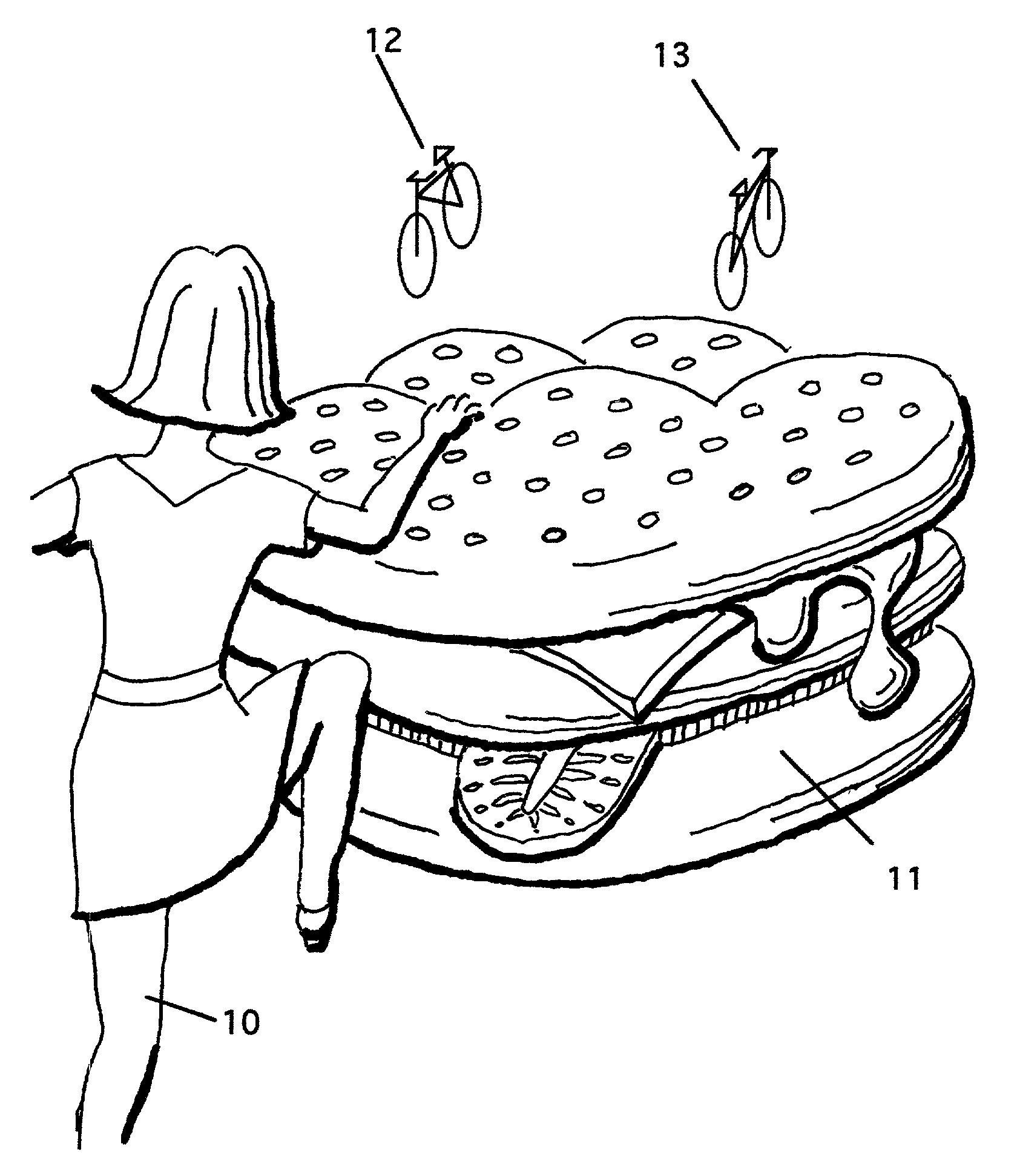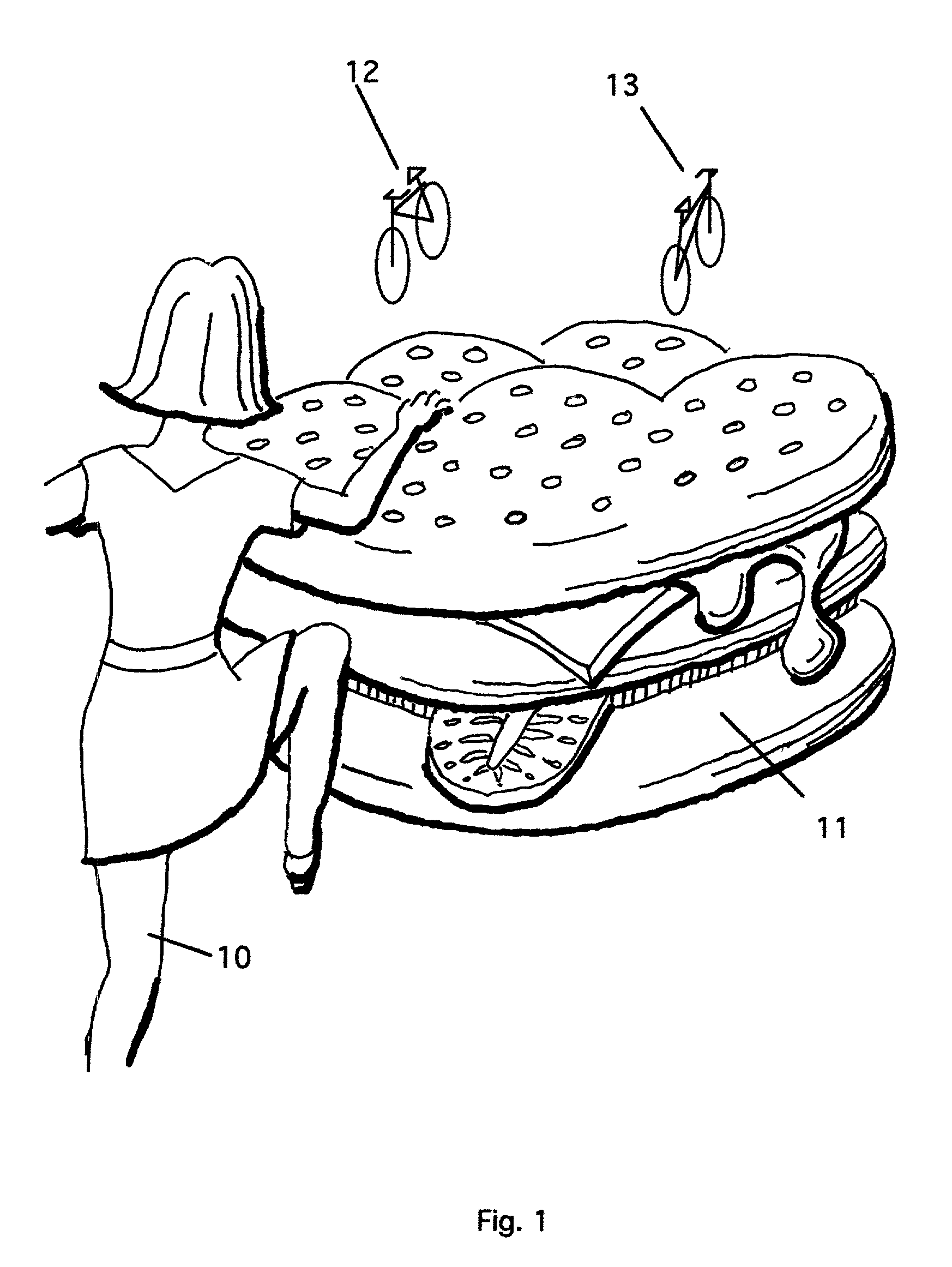Advertising inside electronic games
a technology of electronic games and advertisements, applied in the field of new advertising, can solve the problems of difficult emotional or intellectual engagement, lacked attention-grabbing animation quality of traditional advertising in printed media, and passivity of viewers or readers in both tv and printed advertisements,
- Summary
- Abstract
- Description
- Claims
- Application Information
AI Technical Summary
Problems solved by technology
Method used
Image
Examples
embodiment-- figs.5a and 5b
Additional Embodiment--FIGS. 5A AND 5B
[0135] A software maker could advertise its important software in a game by making it required or helpful to succeed in the game. Strategically important software could be required to use in order for players to win or accomplish goals in the game. For example, AOL Instant Messenger could be required to receive messages from characters in the game or other clues. AOL and Microsoft are vying to spread their competing communication software and get more people using their own communication software than that of their rivals. By requiring some particular software to be used in order to accomplish something in a game, software and communication companies could increase their market share. Such increased market share is acknowledged to be a key competitive goal for many software and communications firms.
[0136] FIG. 5A shows information flow during, and in conjunction with, playing an electronic game which is partially controlled by a remote host comp...
PUM
 Login to View More
Login to View More Abstract
Description
Claims
Application Information
 Login to View More
Login to View More - R&D
- Intellectual Property
- Life Sciences
- Materials
- Tech Scout
- Unparalleled Data Quality
- Higher Quality Content
- 60% Fewer Hallucinations
Browse by: Latest US Patents, China's latest patents, Technical Efficacy Thesaurus, Application Domain, Technology Topic, Popular Technical Reports.
© 2025 PatSnap. All rights reserved.Legal|Privacy policy|Modern Slavery Act Transparency Statement|Sitemap|About US| Contact US: help@patsnap.com



